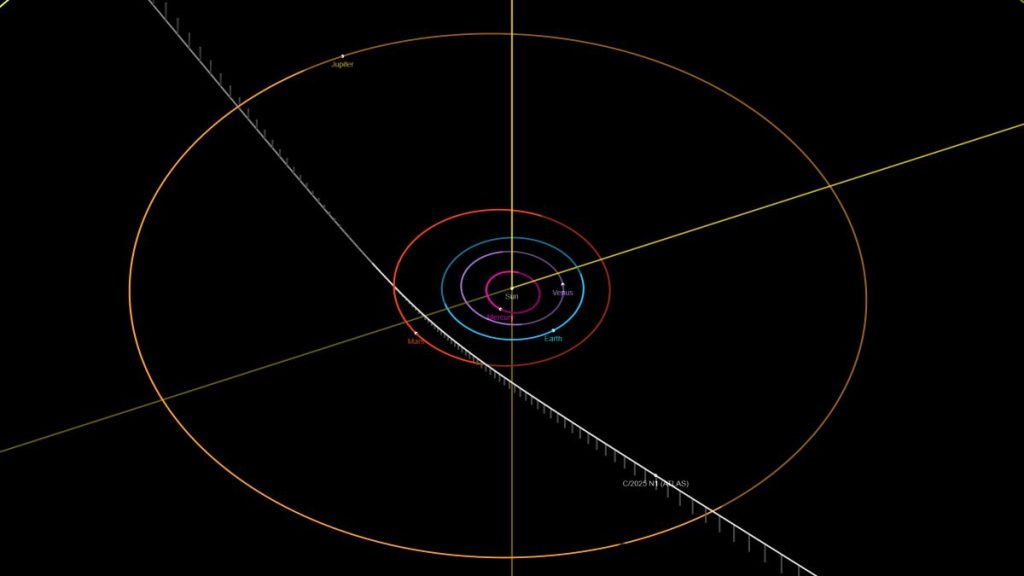Space has long been the ultimate frontier for science, but it’s quickly becoming a new arena for defense and security.
Others are reading now
The strange interstellar visitor known as 3I/ATLAS has caught the attention not only of astronomers but also of military analysts, who say its blistering speed and unpredictable path expose weaknesses in global space-monitoring systems.
Unmatched speed
The comet, named 3I/ATLAS, is traveling at about 130,000 miles per hour, far faster than any natural object regularly observed in our solar system.
Such velocity makes it extremely difficult to track, pushing military detection systems to their technological limits.
For defense networks designed to monitor satellites or incoming missiles, this level of speed compresses reaction times to near zero, leaving little room for error or delay.
Unstable trajectory
Unlike asteroids that orbit the Sun in predictable paths, 3I/ATLAS cuts across the solar system in an erratic route.
Also read
Its behavior challenges the models that defense agencies use to anticipate potential collisions or near-misses from celestial bodies.
Military researchers say it could force a rethink of how early-warning models interpret data from interstellar objects, which may behave very differently from known asteroids or comets.
Vulnerable warning systems
Current early-warning systems are built to detect slow-moving threats, such as space debris or missiles, within the Earth’s orbital zone.
3I/ATLAS’s speed and irregular motion could cause temporary detection gaps, revealing vulnerabilities in global surveillance networks.
For military planners, this raises questions about how future systems will need to evolve to spot and respond to ultra-fast, unpredictable objects entering near-Earth space.
Also read
Risks to space infrastructure
Even though 3I/ATLAS itself poses no immediate danger, its presence provides a testing ground for how high-speed objects could threaten satellites, communication arrays, or reconnaissance systems in orbit.
A single impact could have devastating consequences for defense or navigation networks.
Experts note that such incidents could disrupt military operations, underscoring the need for better shielding, redundancy, and faster orbital tracking protocols.
Need for global coordination
The comet’s rapid movement demonstrates the importance of international cooperation.
Defense and space agencies must share real-time tracking data to ensure that fast-moving interstellar objects are properly monitored and understood.
Also read
“Without coordination, the world risks misinterpreting natural phenomena as potential threats, leading to confusion or unnecessary alarm;” experts warn.
Testing military preparedness
3I/ATLAS has become a natural test for space-defense readiness.
Simulations that once seemed theoretical are now being applied in real time, allowing agencies to assess their capacity to respond to fast-moving celestial threats.
The comet is revealing both strengths and gaps in current systems, especially when it comes to rapid data processing and global alert sharing.


